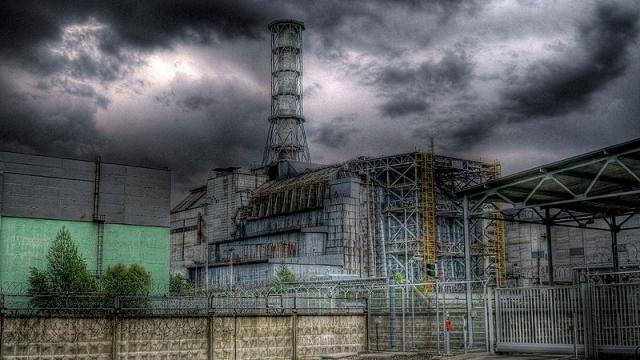The most famous disaster in the history of nuclear power was the result of many small problems — but perhaps the most important problem was the unrecognised presence of a “neutron poison.”
On 26 April 1986, an accident occurred during a systems test at the Chernobyl Power Plant in Ukraine, involving an explosion and a 10-day outbreak of fire that spewed radioactive particles into the atmosphere — 400 times more radioactive material than fell after the bombing of Hiroshima. Over 50 workers were killed, and the surrounding area remained closed to visitors until 2011.
Nuclear reactors change their chemical composition over time. Atoms are bombarded by neutrons, which makes them split apart, releasing both energy and more neutrons, which start the cycle over again. When fissionable material splits, it doesn’t just disappear. Among the products of fission are substances called “neutron poisons.” These isotopes suck up neutrons, especially neutrons going a certain speed, and can slow down or stop the reaction.
On average you want to get more than one neutron out than you put in, running the reactor right at the point of criticality. Yet you don’t want the neutron recapture rate to be too high. It all comes down to the byproducts.
The most famous of these is xenon-135. Xenon-135 isn’t a direct product of fission, but iodine-135 is. Iodine-135 has a half-life of about 6.5 hours, and decays by turning one of its neutrons into a proton. The newly-made xenon-135 sucks down neutrons, but a high enough rate of bombardment can essentially feed it all the neutrons it can take and destroy it as a poison. With the xenon-135 destroyed, the rate of the reaction goes back up.
The trouble starts when the reactor isn’t at a high enough power level to burn off the xenon-135. After a time, the xenon accumulates, poisoning the reactor and decreasing its productivity more and more.
In the case of the Chernobyl disaster, a reactor’s reaction level was deliberately lowered during a testing sequence, which meant the iodine-135 was still accumulating and decaying, but the xenon-135 wasn’t getting cleared away.
The people running the test were not aware of this accumulation, so they pulled out the control rods, which also soaked up neutrons. This actually increased the reaction rate by obliterating the xenon-135, over-heating the core. The result was one of the biggest nuclear disasters in history, and all for a lack of poison.
